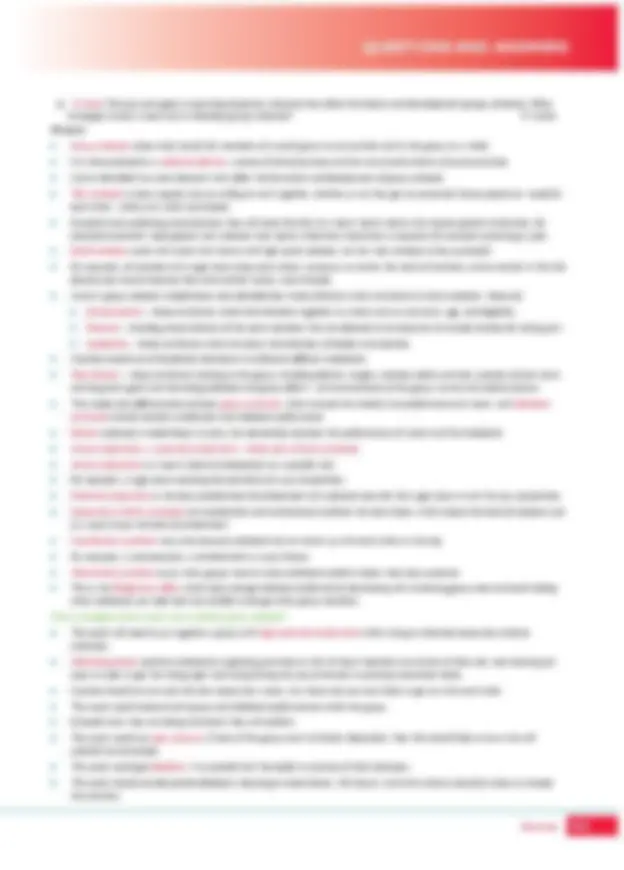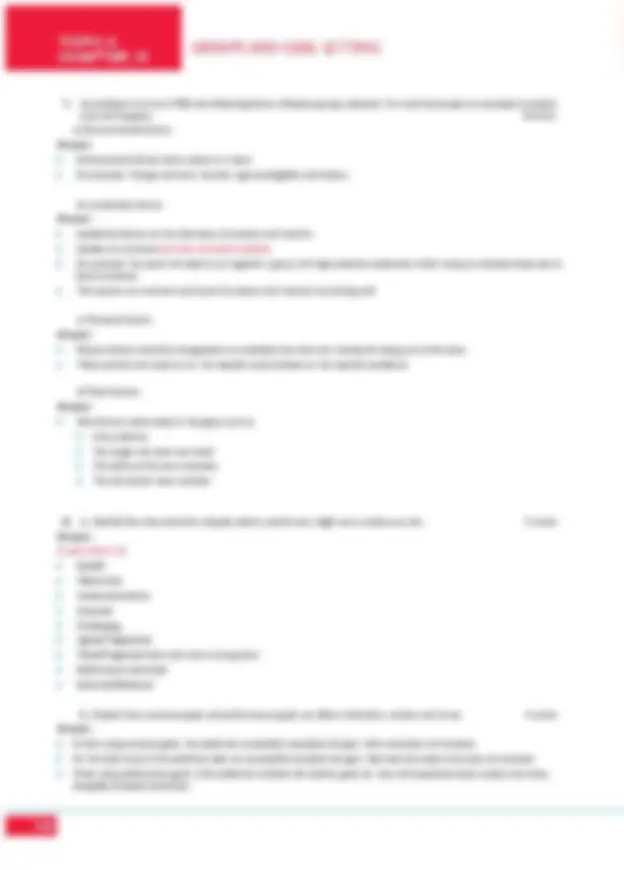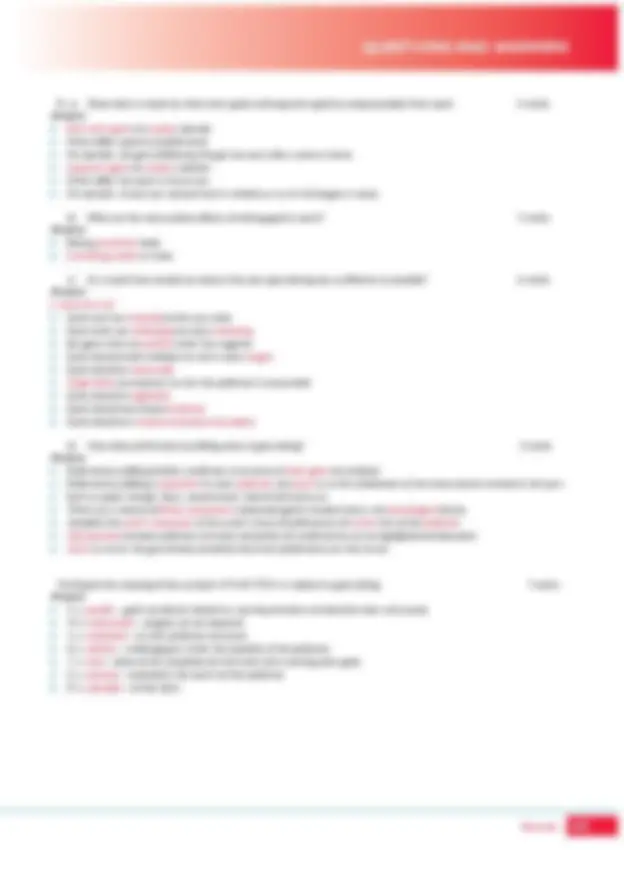
CHAPTER 15 – Groups and goal setting
Exam style questions - text book pages 169 - 170
1) a) What is meant by cohesion in the context of teams? 4 marks
Answer:
•Individuals in a team must have common goals.
•Players in a team must interact effectively.
•Players in a team must communicate effectively.
•Motives for playing must be similar within a team.
•Similarity of interests or outlook ensures cohesion.
•Social cohesion encourages cohesion within the game.
b) Explain what is meant by social loafing by using examples from sport. 3 marks
Answer:
•Loss of motivation: for example, an individual does not try very hard in a game of netball.
•Lack of individuality: for example, an individual player is ‘lost’ within a team or does not get recognition.
•Lack of perceived external evaluation: for example, a player does not feel that he or she is being judged and therefore is not
accountable for lack of effort.
c) What advice would you give a coach of a team to ensure maximum productivity? 5 marks
Answer:
•Encourage cohesion.
•By social mixing or sharing of experiences.
•Give individuals encouragement as well as the team.
•Give praise or reinforce success or give incentives or rewards.
•Attribute failure to controllable factors.
•Attribute success to internal factors.
•Encourage peer support.
•Develop coordination through training, for example, small-sided games.
•Develop a person-oriented leadership approach (democratic leadership).
2) Elite performers sometimes train on their own and sometimes as part of a group. How would you distinguish between a
group and a collection of individuals. 3 marks
Answer:
•A group is a collection of individuals who work together to achieve a common goal. For example a hockey team who train and play
together in the hope of winning the league.
•Elite performers, such Mo Farah, have training partners, all of which will have their own individual goals.
3) a) Explain the Ringlemann effect, and its related term, social loafing. 4 marks
Answer:
•The Ringlemann effect refers to the fact that average individual performances decrease with increasing group size.
•Social loafing occurs when Individuals appear to reduce and hide their effort when in a group, amongst the effort of other group
members.
b) How can social loafing be reduced? 3 marks
Answer:
Note there are a number of options:
•Measure: if people know they are being monitored, they will conform.
•Peer Pressure: if most of the group aren’t of similar disposition, then this should help as he or she will probably be ostracized.
•Feedback: it is possible that the loafer is unaware of their behaviour.
•Provide feedback, focusing on observations, the impact, and what actions will be taken to remedy the situation.
101Answers
QUESTIONS AND ANSWERS














